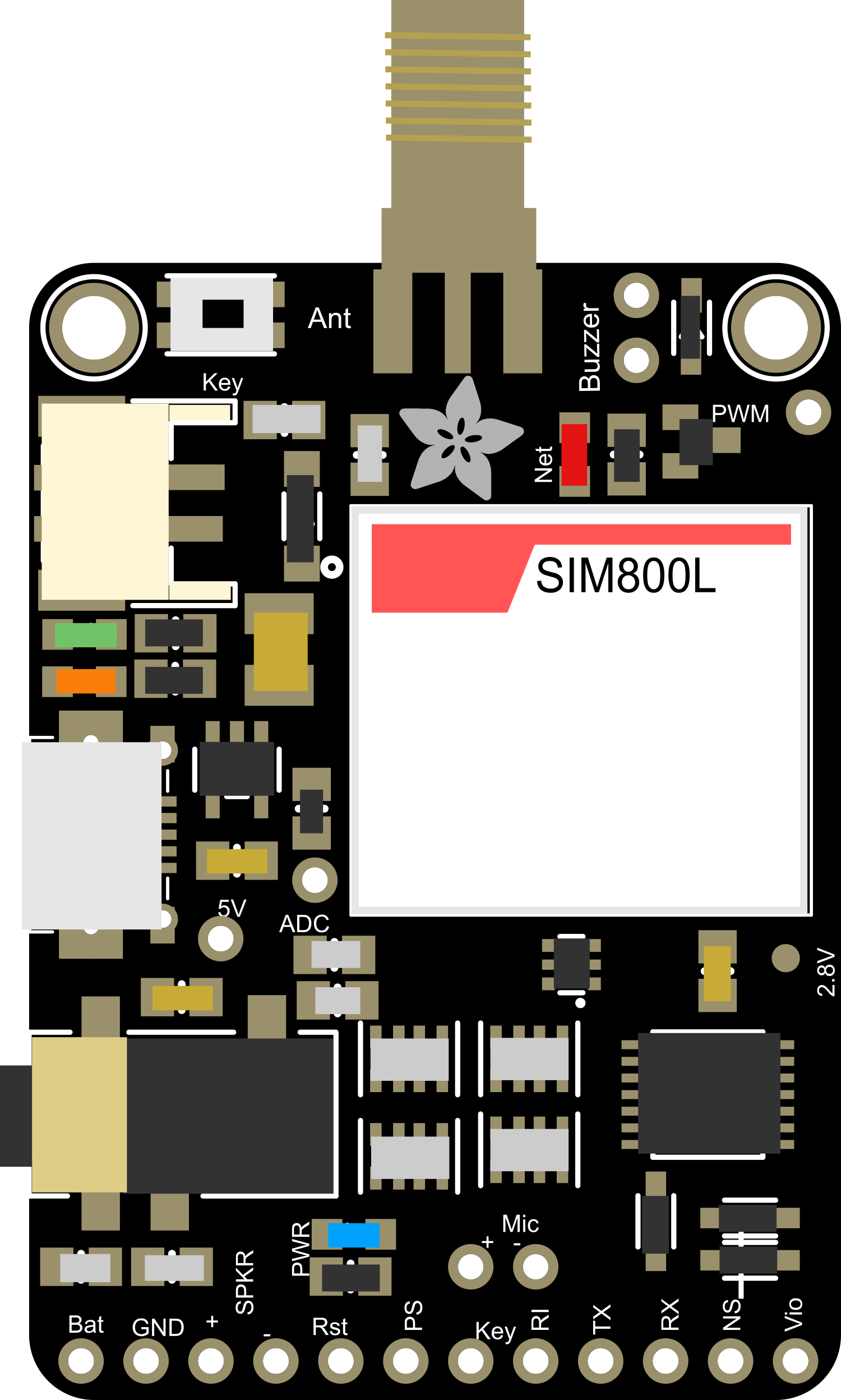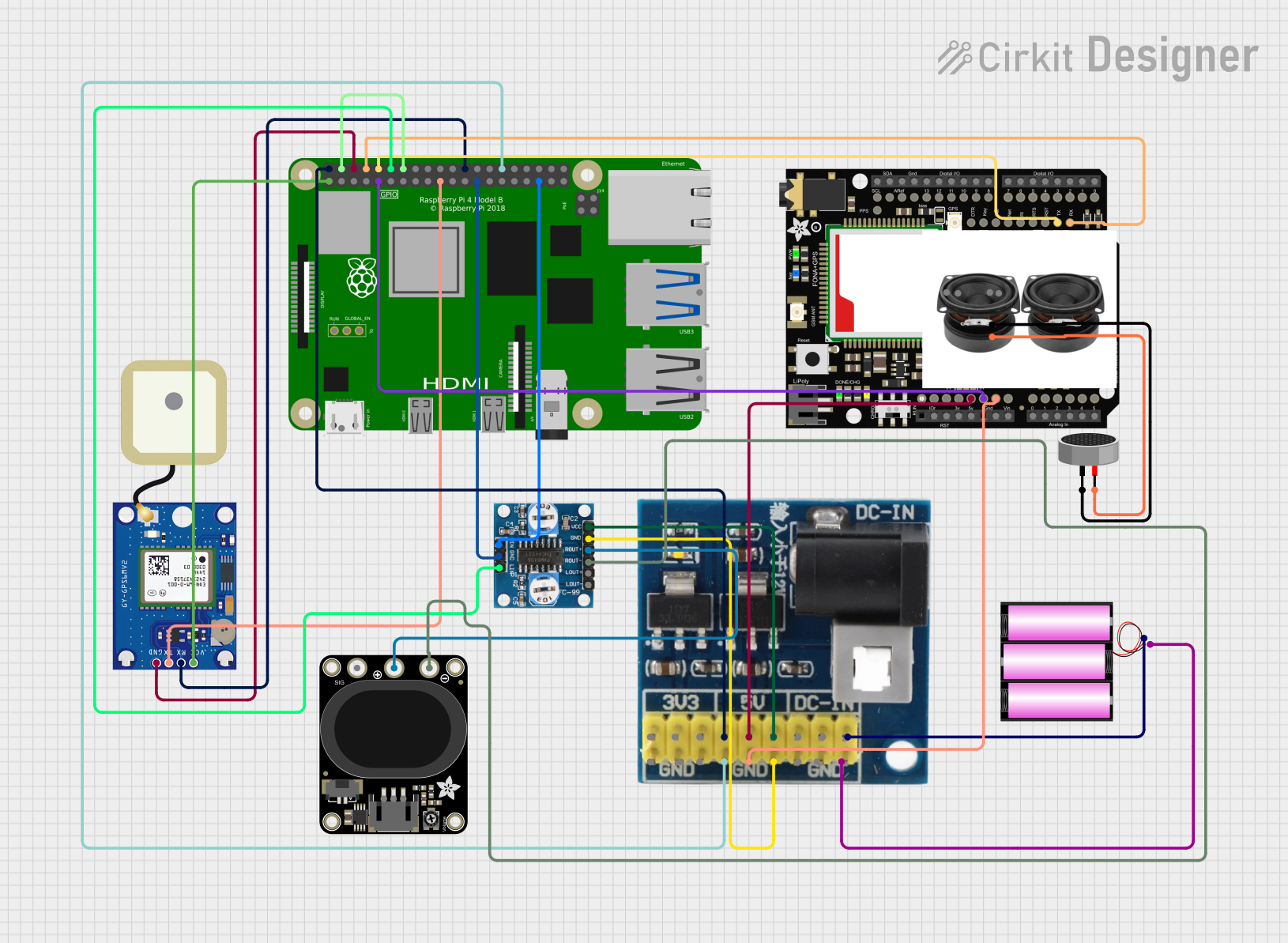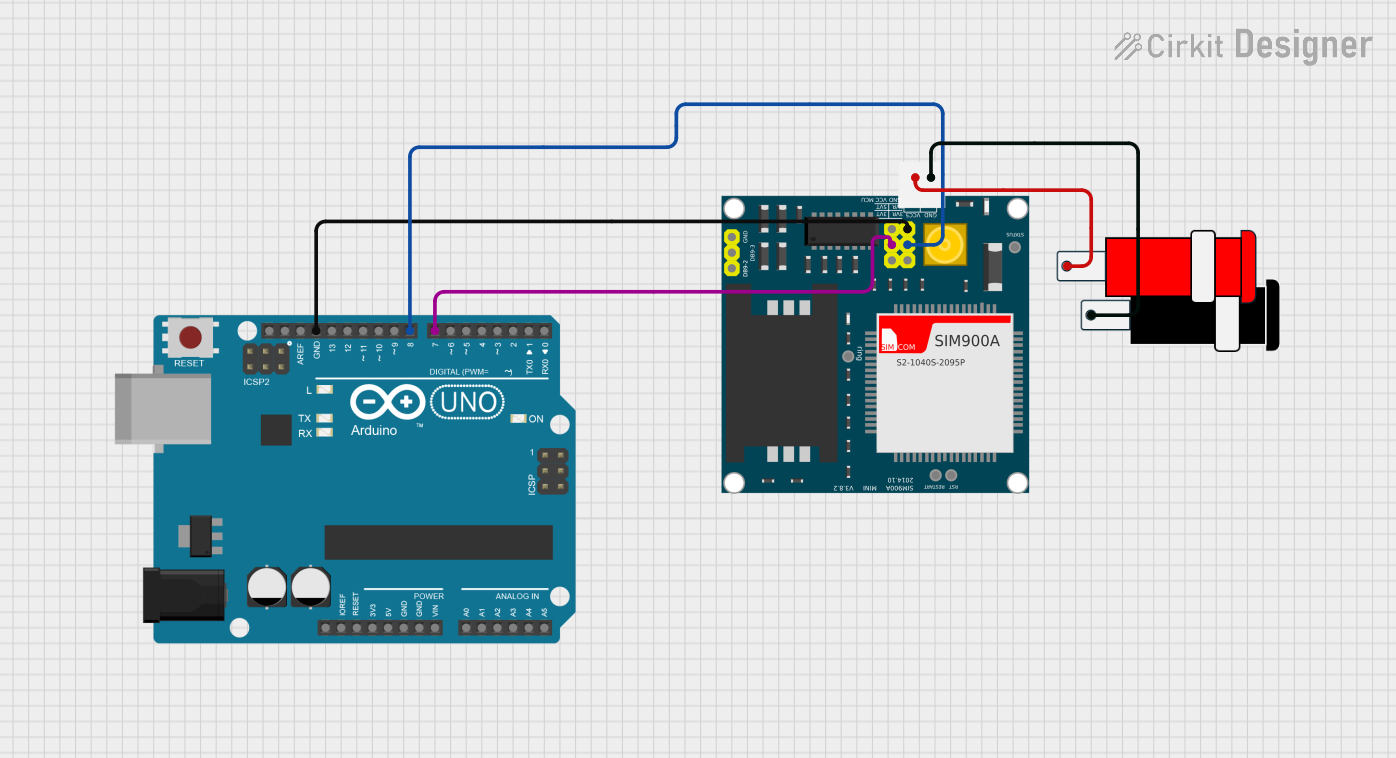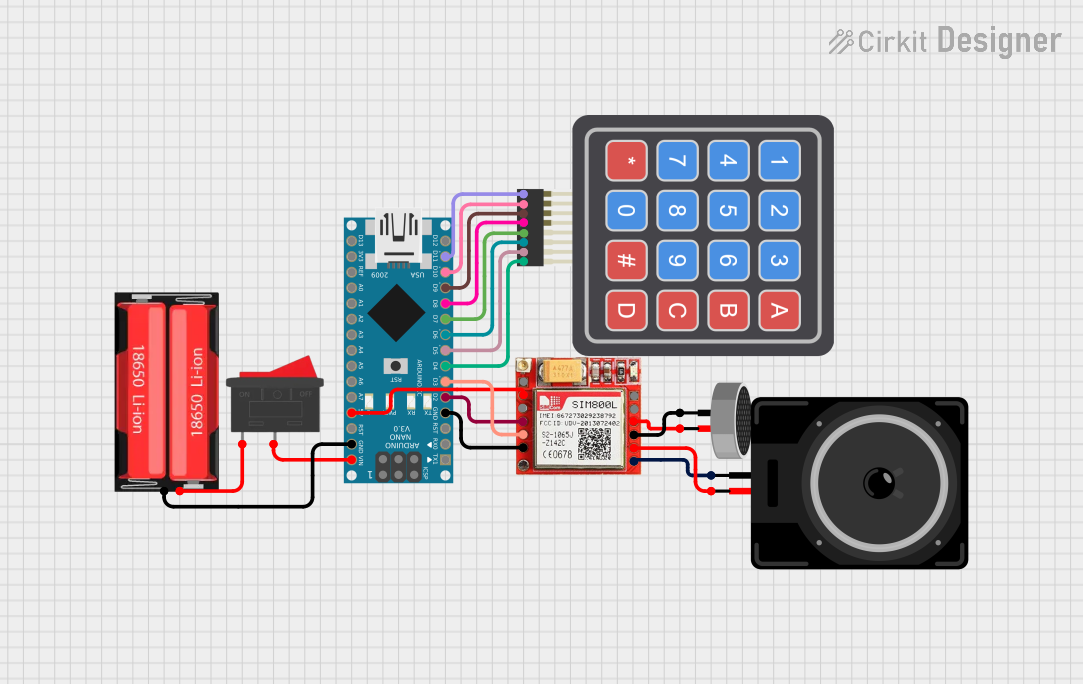
How to Use Adafruit FONA - Mini Cellular GSM SMA Breakout: Examples, Pinouts, and Specs

 Design with Adafruit FONA - Mini Cellular GSM SMA Breakout in Cirkit Designer
Design with Adafruit FONA - Mini Cellular GSM SMA Breakout in Cirkit DesignerIntroduction
The Adafruit FONA - Mini Cellular GSM SMA Breakout is a versatile and compact breakout board designed to integrate cellular communication into your microcontroller projects. It allows for voice calls, SMS messages, and GPRS data connectivity, making it ideal for a wide range of applications such as remote monitoring, IoT devices, and mobile communication projects.
Explore Projects Built with Adafruit FONA - Mini Cellular GSM SMA Breakout

 Open Project in Cirkit Designer
Open Project in Cirkit Designer
 Open Project in Cirkit Designer
Open Project in Cirkit Designer
 Open Project in Cirkit Designer
Open Project in Cirkit Designer
 Open Project in Cirkit Designer
Open Project in Cirkit DesignerExplore Projects Built with Adafruit FONA - Mini Cellular GSM SMA Breakout

 Open Project in Cirkit Designer
Open Project in Cirkit Designer
 Open Project in Cirkit Designer
Open Project in Cirkit Designer
 Open Project in Cirkit Designer
Open Project in Cirkit Designer
 Open Project in Cirkit Designer
Open Project in Cirkit DesignerCommon Applications and Use Cases
- Remote data logging and telemetry
- SMS-based remote control
- Voice communication for embedded systems
- IoT devices with cellular connectivity
- Asset tracking and fleet management
Technical Specifications
Key Technical Details
- Frequency Bands: Quad-band 850/900/1800/1900MHz
- Supply Voltage: 3.4-4.4VDC
- Logic Level: 2.8V logic, but is also 5V compliant
- Current Draw: 250mA during cellular operations
- Antenna Interface: SMA connector for external GSM antenna
- SIM Card Interface: 2FF SIM card slot
Pin Configuration and Descriptions
| Pin Number | Name | Description |
|---|---|---|
| 1 | Vio | Power supply for logic level (2.8V to 5V) |
| 2 | GND | Ground connection |
| 3 | RST | Reset pin (active low) |
| 4 | RX | UART receive pin |
| 5 | TX | UART transmit pin |
| 6 | Key | Power on/off status pin |
| 7 | PS | Power status pin |
| 8 | NS | Network status indicator |
| 9 | RI | Ring indicator for incoming calls and SMS |
| 10 | NC | No connection |
Usage Instructions
How to Use the Component in a Circuit
- Power Supply: Connect a 3.4-4.4VDC power source to the Vio and GND pins.
- Antenna: Attach an SMA antenna to the SMA connector to ensure proper GSM signal reception.
- SIM Card: Insert a 2FF SIM card into the SIM card slot.
- Microcontroller Connection: Connect the RX and TX pins to the corresponding TX and RX pins on your microcontroller, ensuring proper logic level matching.
- Power On: To power on the module, pull the Key pin to ground for a brief moment.
Important Considerations and Best Practices
- Ensure that the power supply can provide sufficient current for the module during transmission.
- Use a level shifter if your microcontroller operates at a different logic level than the module.
- Place the antenna in a position with minimal obstructions to maintain a strong GSM signal.
- Always power down the module before inserting or removing the SIM card.
Example Code for Arduino UNO
#include <SoftwareSerial.h>
SoftwareSerial fonaSerial(2, 3); // RX, TX
uint8_t readline(char *buff, uint8_t maxbuff, uint16_t timeout = 0);
void setup() {
fonaSerial.begin(4800);
if (!fona.begin(fonaSerial)) {
Serial.println(F("Couldn't find FONA"));
while (1);
}
Serial.println(F("FONA is OK"));
// Make a voice call
fona.callPhone("1234567890");
}
void loop() {
// Check for incoming calls
char callerIDbuffer[32]; // we'll store the SMS sender number in here
if (fona.incomingCallNumber(callerIDbuffer)) {
Serial.print(F("Incoming call from "));
Serial.println(callerIDbuffer);
}
}
// Read a line from the FONA's UART
uint8_t readline(char *buff, uint8_t maxbuff, uint16_t timeout) {
uint16_t buffidx = 0;
boolean timeoutvalid = true;
if (timeout == 0) timeoutvalid = false;
while (true) {
if (buffidx > maxbuff) {
// Buffer full
break;
}
while (fonaSerial.available()) {
char c = fonaSerial.read();
// End of line character or newline
if (c == '\r' || c == '\n') {
if (buffidx == 0) { // a newline with no data?
continue; // just ignore it
}
timeout = 0; // the end of the line
break;
}
buff[buffidx] = c;
buffidx++;
}
if (timeoutvalid && timeout > 0) {
delay(1);
timeout--;
if (timeout == 0) {
break;
}
}
}
buff[buffidx] = '\0'; // null terminate the string
return buffidx;
}
Troubleshooting and FAQs
Common Issues Users Might Face
- No Network Connection: Ensure the antenna is properly connected and the SIM card is active and has a data plan.
- Module Does Not Power On: Check the power supply and ensure the Key pin has been pulsed correctly.
- Serial Communication Issues: Verify the baud rate and logic levels match between the FONA module and the microcontroller.
Solutions and Tips for Troubleshooting
- Power Supply Issues: Use a multimeter to check the voltage at the Vio pin.
- Antenna Placement: Try repositioning the antenna or moving the entire setup to a location with better signal reception.
- SIM Card Activation: Confirm that the SIM card is activated with the carrier and properly inserted into the module.
FAQs
Q: Can I use the Adafruit FONA with a 5V microcontroller? A: Yes, the FONA is 5V tolerant on the UART pins, but ensure that the Vio pin is supplied with a voltage within the specified range.
Q: How do I send an SMS using the FONA?
A: You can use the fona.sendSMS(char *number, char *message) function to send an SMS to the specified number.
Q: What should I do if I'm not getting a GSM signal? A: Check the antenna connection, ensure the SIM card is active, and verify that you are in an area with GSM coverage.
Q: How can I reduce power consumption when the module is not in use? A: You can put the FONA into sleep mode by using the appropriate AT command or controlling the power key pin.